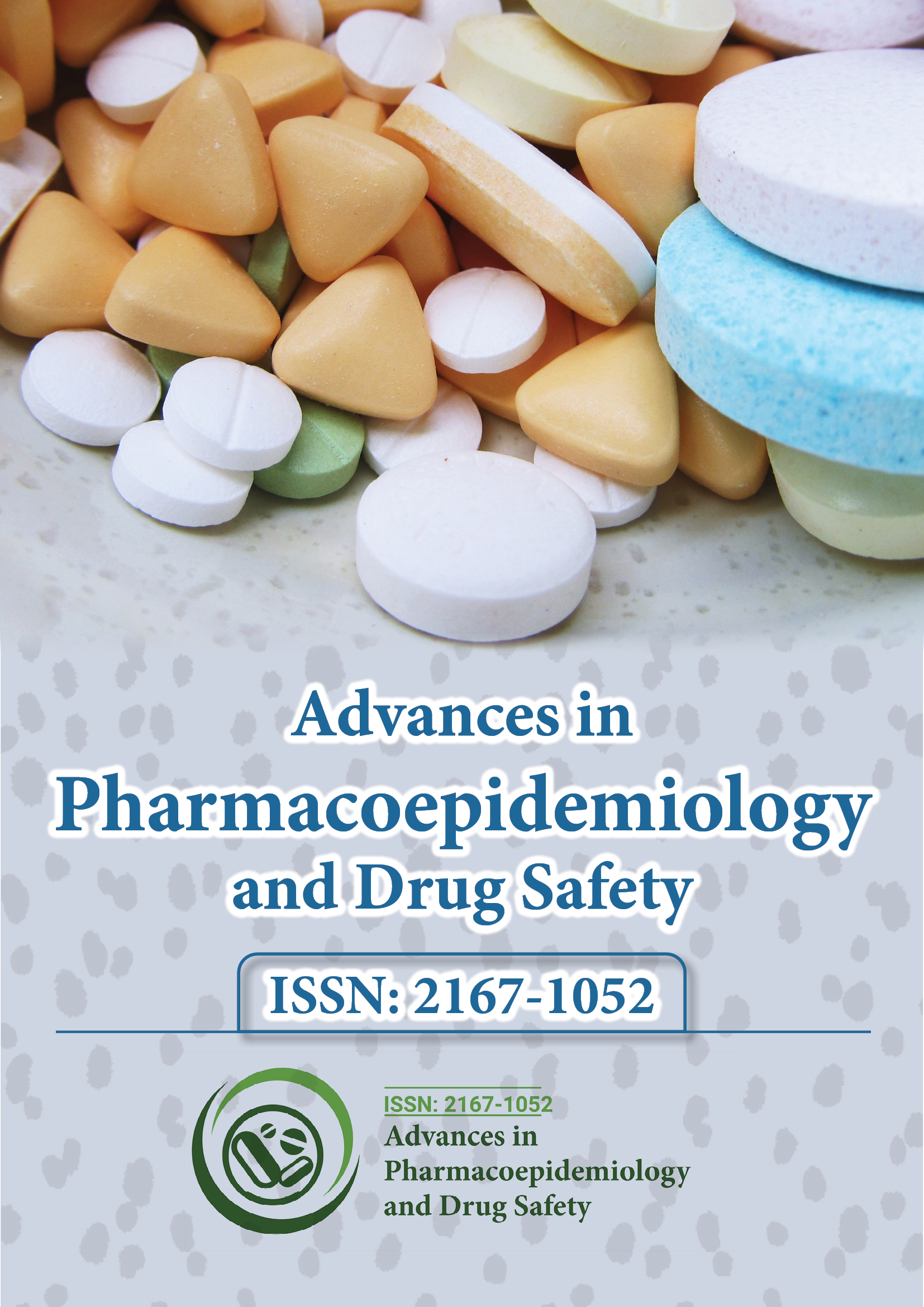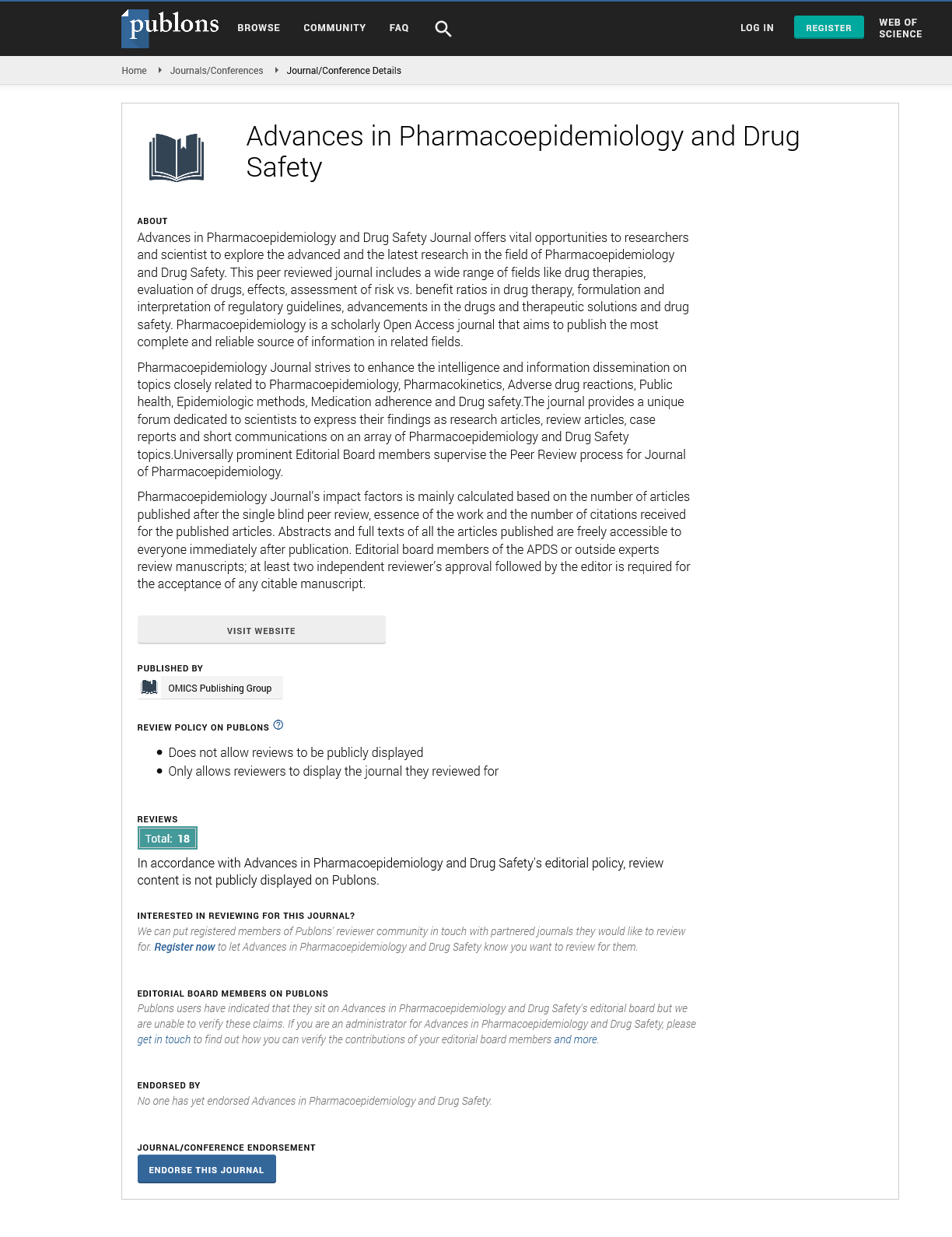Indexed In
- Open J Gate
- Genamics JournalSeek
- Academic Keys
- JournalTOCs
- RefSeek
- Hamdard University
- EBSCO A-Z
- SWB online catalog
- Publons
- Geneva Foundation for Medical Education and Research
- Euro Pub
- Google Scholar
Useful Links
Share This Page
Journal Flyer

Open Access Journals
- Agri and Aquaculture
- Biochemistry
- Bioinformatics & Systems Biology
- Business & Management
- Chemistry
- Clinical Sciences
- Engineering
- Food & Nutrition
- General Science
- Genetics & Molecular Biology
- Immunology & Microbiology
- Medical Sciences
- Neuroscience & Psychology
- Nursing & Health Care
- Pharmaceutical Sciences
Commentary - (2023) Volume 12, Issue 4
Clindamycin: Navigating the Terrain of Antibiotic Resistance and Clinical Applications
Zhang Liang*Received: 03-Jul-2023, Manuscript No. PDS-23-22751; Editor assigned: 06-Jul-2023, Pre QC No. PDS-23-22751 (PQ); Reviewed: 20-Jul-2023, QC No. PDS-23-22751; Revised: 27-Jul-2023, Manuscript No. PDS-23-22751 (R); Published: 04-Aug-2023, DOI: 10.35248/ 2167-1052.23.12.321
Description
Clindamycin is a potent antibiotic that has played a significant role in the management of various bacterial infections for several decades. It belongs to the lincosamide class of antibiotics and is known for its effectiveness against a wide range of bacteria. Since its discovery, clindamycin has been utilized in both medical and dental fields to treat infections caused by susceptible microorganisms.
Mechanism of action
Clindamycin exerts its antimicrobial activity by inhibiting bacterial protein synthesis. It binds to the 50S subunit of the bacterial ribosome, preventing the initiation of protein synthesis and leading to the disruption of bacterial growth and replication. This mechanism of action is similar to that of macrolide antibiotics, but clindamycin's chemical structure is distinct, contributing to its unique spectrum of activity.
Pharmacokinetics
Clindamycin is available in various formulations, including oral capsules, tablets, and parenteral formulations (intravenous or intramuscular). The oral forms are well-absorbed from the gastrointestinal tract, with peak levels achieved within 1-2 hours. The drug is widely distributed throughout the body, including into bone tissue and abscesses. It can cross the placenta and is excreted in breast milk. Clindamycin is metabolized in the liver and is primarily excreted in urine and feces.
Clinical uses
Clindamycin is employed to treat a broad spectrum of bacterial infections, both in outpatient and hospital settings. It is particularly effective against anaerobic bacteria, which thrive in environments devoid of oxygen. Some common clinical uses of clindamycin include:
Skin and soft tissue infections: Clindamycin is often prescribed to treat various skin infections, such as cellulitis, abscesses, and infected wounds.
Respiratory tract infections: It can be used to manage lower respiratory tract infections caused by susceptible bacteria, especially in patients allergic to other antibiotics.
Intra-abdominal infections: Clindamycin is effective against anaerobic bacteria commonly found in the gastrointestinal tract, making it useful for treating intra-abdominal infections.
Bone and joint infections: Clindamycin's ability to penetrate bone tissue makes it valuable for treating bone and joint infections.
Gynecological infections: It can be used to manage infections of the female reproductive system, such as pelvic inflammatory disease and certain vaginal infections.
Dental infections: Clindamycin has been employed in dentistry to manage oral infections and as a prophylactic agent for patients with certain cardiac conditions undergoing dental procedures.
Resistance and precautions
Like other antibiotics, bacterial resistance to clindamycin has emerged as a concern. Resistance can develop due to various mechanisms, including alterations in the bacterial ribosome structure that reduce the drug's binding affinity. This underscores the importance of using clindamycin judiciously to prevent the spread of resistant strains.
Additionally, clindamycin can cause a potentially severe condition called Clostridium Difficile-Associated Diarrhea (CDAD) or pseudomembranous colitis. This condition arises due to the disruption of the normal gut flora, allowing the opportunistic pathogen C. difficile to overgrow and cause inflammation. Patients experiencing severe, persistent diarrhea while on clindamycin should seek medical attention.
Side effects
While clindamycin is generally well-tolerated, some individuals may experience side effects. Common side effects include nausea, vomiting, diarrhea, and abdominal pain. Skin rashes and allergic reactions can also occur. In rare cases, clindamycin can lead to more serious side effects, such as liver toxicity or severe allergic reactions.
Current relevance
As of my knowledge cutoff in September 2021, clindamycin remains an essential antibiotic in clinical practice. However, the landscape of antibiotic usage is continuously evolving due to factors such as antibiotic resistance, advancements in the medical science, and changing treatment guidelines. Researchers and healthcare professionals are actively exploring new strategies to combat bacterial infections while minimizing the development of resistance.
Conclusion
Clindamycin stands as a potent and versatile antibiotic that has significantly contributed to the management of various bacterial infections over the years. Its mechanism of action, which involves inhibiting bacterial protein synthesis by binding to the 50S ribosomal subunit, sets the stage for its efficacy against a wide range of bacteria. With its unique spectrum of activity, it has found its place in both medical and dental fields.
Citation: Liang Z (2023) Clindamycin: Navigating the Terrain of Antibiotic Resistance and Clinical Applications. Adv Pharmacoepidemiol Drug Saf. 12:321.
Copyright: © 2023 Liang Z. This is an open-access article distributed under the terms of the Creative Commons Attribution License, which permits unrestricted use, distribution, and reproduction in any medium, provided the original author and source are credited.

